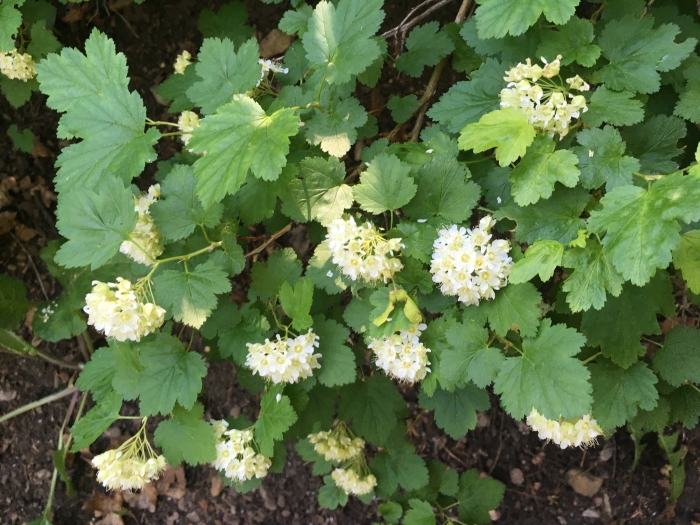Mallow Ninebark
(Physocarpus malvaceus)
Mallow Ninebark (Physocarpus malvaceus)
/
/

jessjane
Public Domain
Image By:
jessjane
Recorded By:
Copyright:
Public Domain
Copyright Notice:
Photo by: jessjane | License Type: Public Domain | License URL: http://creativecommons.org/publicdomain/zero/1.0/ | Rights Holder: jessjane | Publisher: iNaturalist | Date Created: 2020-06-05T16:34:07Z |













































Estimated Native Range
Summary
Physocarpus malvaceus, commonly known as Mallow Ninebark, is a deciduous shrub native to chaparral, mixed conifer forests, and the forest edges of the Western United States. It typically grows up to 2.1 meters tall, with some specimens reaching 3 meters, and is known for forming dense thickets. The branches are hairless, and mature stems feature distinctive shreddy bark that peels away in strips. Mallow Ninebark is a pioneer species that thrives in disturbed areas, often increasing in number after events such as wildfires due to its ability to sprout from rhizomes. The plant is considered "fire-resistant," as it not only survives fire but also becomes more prevalent in burned areas compared to unburned ones. It produces clusters of small, white flowers in the spring, which are moderately showy and attract pollinators.
Mallow Ninebark is valued for its resilience and adaptability, making it suitable for use in restoration projects and native plant gardens. It is also appreciated for its ornamental qualities, including its exfoliating bark and springtime blooms. This shrub is versatile in cultivation, tolerating full sun to full shade and a range of water conditions from low to medium. It prefers soils with varying drainage capabilities, from fast to slow. While it is not commonly used in traditional garden settings, its hardiness and low maintenance requirements make it an excellent choice for naturalized areas and erosion control.CC BY-SA 4.0
Mallow Ninebark is valued for its resilience and adaptability, making it suitable for use in restoration projects and native plant gardens. It is also appreciated for its ornamental qualities, including its exfoliating bark and springtime blooms. This shrub is versatile in cultivation, tolerating full sun to full shade and a range of water conditions from low to medium. It prefers soils with varying drainage capabilities, from fast to slow. While it is not commonly used in traditional garden settings, its hardiness and low maintenance requirements make it an excellent choice for naturalized areas and erosion control.CC BY-SA 4.0
Plant Description
- Plant Type: Shrub
- Height: 3-6 feet
- Width: 3-5 feet
- Growth Rate: Rapid
- Flower Color: White
- Flowering Season: Spring
- Leaf Retention: Deciduous
Growth Requirements
- Sun: Full Sun, Part Shade, Full Shade
- Water: Low, Medium
- Drainage: Fast, Medium, Slow
Common Uses
Bee Garden, Bird Garden, Butterfly Garden, Fire Resistant, Low Maintenance, Showy Flowers
Natural Habitat
Native to chaparral, mixed conifer forests, and forest edges in the Western United States
Other Names
Common Names: Skir Smällspirea
Scientific Names: , Physocarpus malvaceus, Opulaster malvaceus, Physocarpus pauciflorus, Opulaster pubescens, Neillia malvacea, Opulaster pauciflorus, Spiraea opulifolia var. pauciflora, Neillia monogyna var. malvacea, Neillia torreyi,
GBIF Accepted Name: Physocarpus malvaceus (Greene) Kuntze